Whether they’re called nerd, dork, or geek, kids who get excited about using their brains are becoming increasingly chic. STEM, an acronym for Science Technology Engineering and Mathematics, is being stuck on everything from toys to curriculum as the nationwide call for workers in those fields gets louder each year. We think that igniting the spark of curiosity goes beyond just getting a job, though.
The Sciences give us methods of thinking critically and systematically. Collecting data may not look terribly creative to some, but learning how to interpret that data certainly is. When performed well, the Sciences, like any other discipline, helps us ask better questions instead of just memorizing answers.
We’ve chosen some toys that will not only engage children in asking those starting questions, but may also help encourage them to go out and seek the answers for themselves. So put on those safety goggles, button up that lab coat, and start exploring.
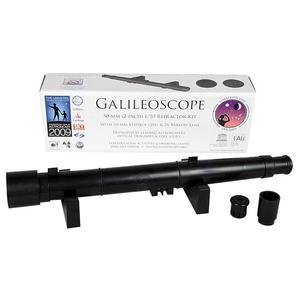
What better way to start a STEM Toy Roundup than with a telescope? Seeing a magnified Moon move across the sky for the first time can be a very powerful memory. Unfortunately, many children are denied this experience due to the high cost of most telescopes.
We were very excited to find the Galileoscope, a beginner’s telescope specially created by educators and scientists to be affordable. Keeping the cost down is largely done by having the user assemble the scope. A fun and educational process, this gives kids a better understanding of how the optics work. Plus, they get to feel like they made their own scope.
Impressive optics allows for viewings of the Moon, Jupiter and its moons, and even a distant sight of Saturn and its rings. It can be attached to virtually any tripod on the market, and we suggest this as it helps with balance for viewing very distant objects. Perfect for classrooms and homes. (View on Amazon.)
Because telescopes are so expensive, we highly recommend starting with this scope before investing in something powerful enough to see Jupiter’s Big Red Spot.
Aside from the amazing images, we love how telescopes so easily create a passion that people can share. Bonding over mutual interests is a fantastic way for children and adults to spend time, but there are other ways of doing so that don’t involve driving beyond the city lights.
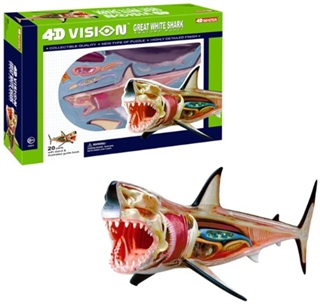
Often seen as a solo project, building models with a person who shares the same passion can enhance the fun. With the 4D Vision model series from Tedco, kids can do most of the work, but those under ten may need an adult to help with some of the smaller, trickier parts.
Highly detailed and accurate, these models serve as puzzles for enthusiasts of biology or general anatomy. Anyone who wants to know the ins as well as the outs of the Animal Kingdom will find something to pique their interest in this series. There’s farm animals, dinosaurs, insects, human anatomy models, and more, but our favorite might be the Great White Shark. These models are solid on one side, looking like the normal skin of the creature. The other side is clear, letting the internal organs and skeleton be seen. (View on Amazon.)
Playing together can help improve cooperative skills and manners, while models help teach sequential thinking and the importance of precision. Good things for any field of study, in STEM or otherwise.
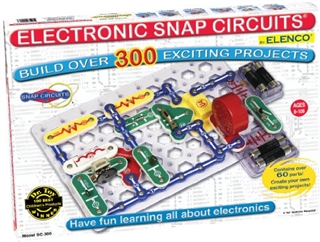
While cooperation is certainly a necessary skill in life, so is self-reliance. For a toy that challenges children but typically doesn’t need any adult guidance, we suggest the Snap Circuits Series.
The thrilling challenge of a construction set combines with the practical basics of electronics in this snap-together circuit kit. The wires have all been attached to thick pieces of plastic, making them very durable and easy to manipulate into proper placement without the need for a delicate touch. While this set has 300 configurations to complete, there are also beginner and advanced kits, even a Student Kit that is incredibly educational. (View on Amazon.)
Though crucial to all studies, adherence to instructions must be balanced by a curious exploration of the limits if new possibilities are to be discovered.
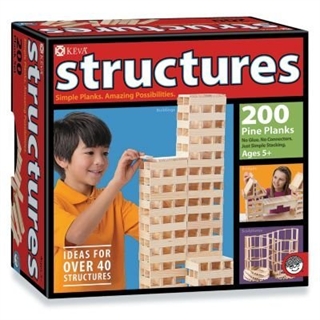
Toys that lack rules or instructions can help create a beneficial way for kids to push against boundaries in order to see what they can really accomplish. If free-form play without any design instructions sounds more fun, then the KEVA Structures Sets might fit the bill.
Balance, proportion, and structural limitations are crucial to engineering, and this KEVA set, without any glue or connectors, requires children to think critically as they push their structures to the limits. Creating impressive buildings by simply stacking the planks on one another, children can experiment with what factors can be changed while maintaining structural integrity. A booklet showing building ideas is included, but without step-by-step instructions, children are forced to test the patterns and discover which designs work best. (View on Amazon.)
Improving pattern recognition skills is key to learning anything, and the free-form play provided by the KEVA sets certainly makes room for pattern exploration. For more directed learning, experiment kits might be the way to go.
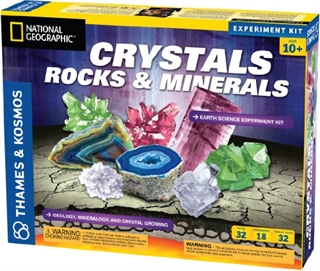
Structured learning, such as from an experiment kit, can help kids gain access to information they may not have discovered on their own. This kit not only grows crystals, but also introduces kids to the geological sciences.
Beautiful as they are intricate, crystals are made from very specific patterns to create their characteristic formations. This kit explains how several of those patterns emerge, as well as provide the materials needed to create three different types of crystals, including your own geode. Going far beyond just growing crystals from alum in hot water, kids can also learn how to test and identify minerals, understand the rock cycle, and the chemical process behind various crystalline structures. Geology is an important science for anyone interested in city planning, ecology, environmental efforts, space research, and much more. (View on Amazon.)
For those more interested in the typical crystal growing kit without the added geological experiments and information, we suggest this kit by 4M. (Here’s our full review of the 4M kit.)
Not everything amazing is as lovely as a crystal. Sometimes fascinating finds are as ordinary as mud.
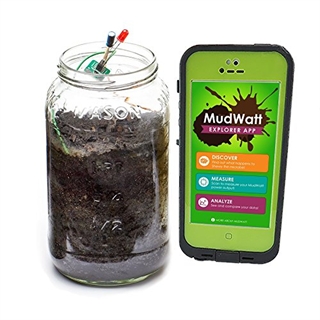
Science, just as with everyday life, is possible by very important factors that go unseen by us. Some of those factors are crystalline patterns and atomic structures, and some are microbes.
Even those who don’t have fond memories of their high school Biology class can appreciate how cool the MudWatt is. Fill up the container with plain old mud, then wait for the microbes to start making electricity! As with all living things, these microbes will need to be fed, and part of the fun is figuring out which foods make them the most productive. Ketchup from the fridge? Perhaps some fruit juice. Maybe a little bit of coffee grounds or old spinach leaves will do the trick. An interactive app unlocks portions of an educational graphic novel that explains what is happening at that particular stage in the microbes’ activity level. (View on Amazon.)
Witnessing the effects of the unseen microbes is a very valuable learning experience, as it demonstrates the limits of our senses and the necessity for additional research tools. But if kids want to root around in something other than dirt, there are other options.
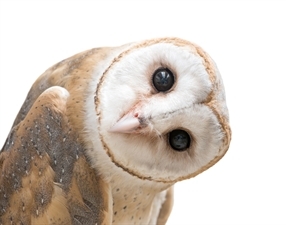 Some of us really enjoy getting down and dirty with our education, and mud may not be dirty enough. So, have you heard of owl pellets?
Some of us really enjoy getting down and dirty with our education, and mud may not be dirty enough. So, have you heard of owl pellets?
Often used in biology lessons, these unexciting looking bundles are actually the vomited up remains of an owl’s dinner. Unsafe to pass through their entire digestive track, owls store their prey’s bones, teeth, and claws in their gizzards, which compress those items into a pellet. Later, the pellet is regurgitated back up, creating a fascinating opportunity for curious humans to explore the cycle of life. Sanitized with heat, these jumbo sized pellets each contain a lot of bones including multiple skulls and are large enough for two kids to share. Found bones can be kept and used in creative art projects. Good times. (View on Amazon.)
Trying to reassemble a digested skeleton is a puzzle in of itself, and some of those bones can get really, really small. Luckily, we have other puzzles that pack just as much challenge without all the dead animal bits.
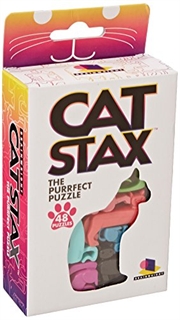
If digging around in owl puke doesn’t seem appealing (but how could it not?), what about a puzzle that challenges spatial skills?
Often overlooked as ways to idly pass the time, puzzles actually provide an array of mental and physical benefits. Shape recognition, problem solving, and cause-and-effect skills are all given a workout, while fitting pieces together helps fine motor skills. Another important benefit children gain from puzzles is learning how to create a strategy that will allow them to complete a goal, something that will help them become successful adults, no matter what path they choose. With Cat Stax, the seriously cute, cat-shaped pieces fit together to up the grid shown on the cards. When a single layer of cats has been mastered, try the cards that require laying cat upon cat. Challenging for both children and adults, this game fits easily into purses and can be taken to waiting rooms or restaurants to help distract from the slow passing of time. (View on Amazon.)
Seeing how all the pieces fit together is key to understanding any concept. Often, to see the whole, we also need to see the parts. Microscopes, like telescopes, let us see things beyond what our eyes allow and helps to visually close the distance between us and our world.
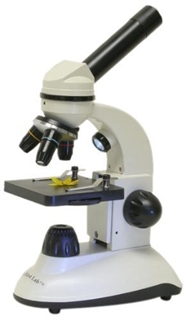
In any field of study, it’s important to remember the value of all the work that came before. Progress is made by people building their work on the efforts of others that came before them. Sometimes large leaps in knowledge are made, but it’s more typically made in small increments.
We end our Toys of Science Roundup on the My First Lab Microscope as a reminder to appreciate the small things. The glass optics allow for a magnification of 400x, with clear results. This is a favorite choice for homeschooling or hobbyists. It comes with both prepared and blank slides, including a concave slide, so children can immediately start seeing what small parts help make up the big parts. (View on Amazon.)
We’re always eager to geek out, so if you have a favorite STEM toy that didn’t make our list, please let us know! Just drop us a line at info@theguidefortoys.com, and tell us what you enjoy most about that toy.